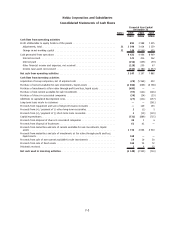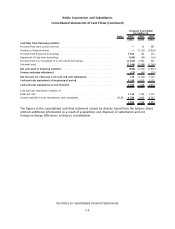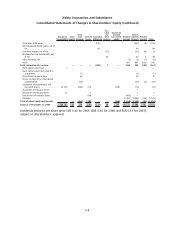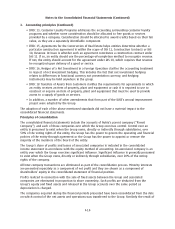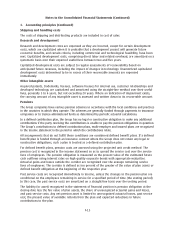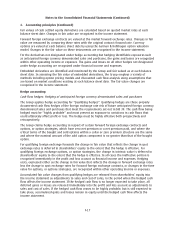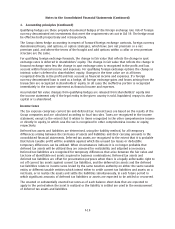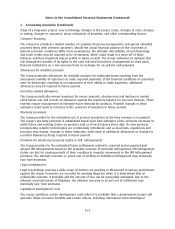Nokia 2009 Annual Report Download - page 187
Download and view the complete annual report
Please find page 187 of the 2009 Nokia annual report below. You can navigate through the pages in the report by either clicking on the pages listed below, or by using the keyword search tool below to find specific information within the annual report.1. Accounting principles (Continued)
Shipping and handling costs
The costs of shipping and distributing products are included in cost of sales.
Research and development
Research and development costs are expensed as they are incurred, except for certain development
costs, which are capitalized when it is probable that a development project will generate future
economic benefits, and certain criteria, including commercial and technological feasibility, have been
met. Capitalized development costs, comprising direct labor and related overhead, are amortized on a
systematic basis over their expected useful lives between two and five years.
Capitalized development costs are subject to regular assessments of recoverability based on
anticipated future revenues, including the impact of changes in technology. Unamortized capitalized
development costs determined to be in excess of their recoverable amounts are expensed
immediately.
Other intangible assets
Acquired patents, trademarks, licenses, software licenses for internal use, customer relationships and
developed technology are capitalized and amortized using the straightline method over their useful
lives, generally 3 to 6 years, but not exceeding 20 years. Where an indication of impairment exists,
the carrying amount of any intangible asset is assessed and written down to its recoverable amount.
Pensions
The Group companies have various pension schemes in accordance with the local conditions and practices
in the countries in which they operate. The schemes are generally funded through payments to insurance
companies or to trusteeadministered funds as determined by periodic actuarial calculations.
In a defined contribution plan, the Group has no legal or constructive obligation to make any additional
contributions if the party receiving the contributions is unable to pay the pension obligations in question.
The Group’s contributions to defined contribution plans, multiemployer and insured plans are recognized
in the income statement in the period to which the contributions relate.
All arrangements that do not fulfill these conditions are considered defined benefit plans. If a defined
benefit plan is funded through an insurance contract where the Group does not retain any legal or
constructive obligations, such a plan is treated as a defined contribution plan.
For defined benefit plans, pension costs are assessed using the projected unit credit method: The
pension cost is recognized in the income statement so as to spread the service cost over the service
lives of employees. The pension obligation is measured as the present value of the estimated future
cash outflows using interest rates on high quality corporate bonds with appropriate maturities.
Actuarial gains and losses outside the corridor are recognized over the average remaining service
lives of employees. The corridor is defined as ten percent of the greater of the value of plan assets or
defined benefit obligation at the beginning of the respective year.
Past service costs are recognized immediately in income, unless the changes to the pension plan are
conditional on the employees remaining in service for a specified period of time (the vesting period).
In this case, the past service costs are amortized on a straightline basis over the vesting period.
The liability (or asset) recognized in the statement of financial position is pension obligation at the
closing date less the fair value of plan assets, the share of unrecognized actuarial gains and losses,
and past service costs. Any net pension asset is limited to unrecognized actuarial losses, past service
cost, the present value of available refunds from the plan and expected reductions in future
contributions to the plan.
F13
Notes to the Consolidated Financial Statements (Continued)




